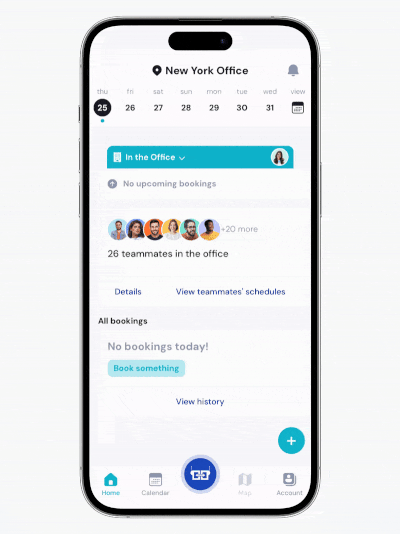




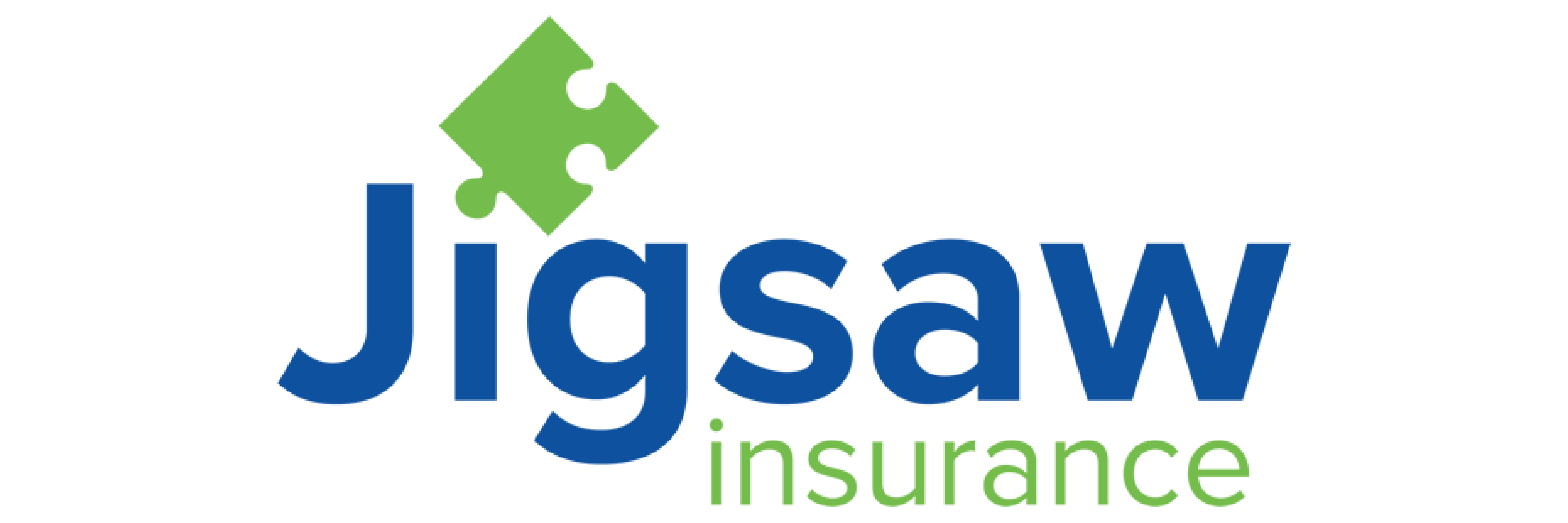

92% of HR leaders set employee experience as their top priority.
Foster employee autonomy
People with more autonomy at work are healthier and less stressed, not to mention the fact that strong motivation can only be born in a highly autonomous state. Keep employees happy and inclined to perform - give them full control over their schedule.

.png?width=1500&height=2000&name=set%20work%20status%20yarooms@0.5x%20(1).png)
Embrace flexibility
From meeting rooms to parking lots - set up a truly agile office and make all of your spaces bookable. Implement flexible seating strategies to build an activity-based workplace that doesn’t tie people to their desks. Assign configurable properties (Dual monitor, Window, etc.) to each space so that employees can use them to search for the perfect seat.

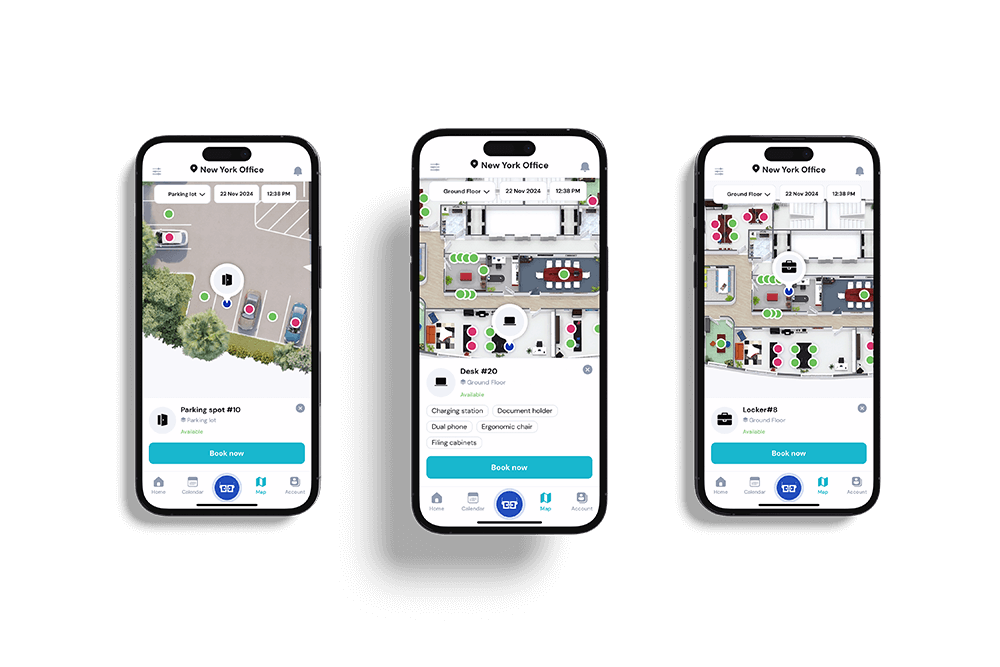
Stay interconnected
In the world of hybrid work, people need workplace technology that doesn't bind them to one tool or one location. It must be fast, mobile, and interconnected - just like YAROOMS. Thanks to our integration with Microsoft Teams, you can reserve spaces without leaving its familiar interface. The busy bees who are always on the go can use a mobile application to schedule the day wherever they are.
Stay interconnected
In the world of hybrid work, people need workplace technology that doesn't bind them to one tool or one location. It must be fast, mobile, and interconnected - just like YAROOMS. Thanks to our integration with Microsoft Teams, you can reserve spaces without leaving its familiar interface. The busy bees who are always on the go can use a mobile application to schedule the day wherever they are.
.png)
.png)
Learn from feedback
Feedback isn’t simply about knowing what you did right or wrong. In workplaces, feedback can become a powerful tool to engage and empower your staff. Listen to what your teams have to say: measure the office satisfaction with a short survey, sent to employees after their visit to the office. Stay always open to more in-depth feedback and take action to improve your performance.
Learn from feedback
Feedback isn’t simply about knowing what you did right or wrong. In workplaces, feedback can become a powerful tool to engage and empower your staff. Listen to what your teams have to say: measure the office satisfaction with a short survey, sent to employees after their visit to the office. Stay always open to more in-depth feedback and take action to improve your performance.
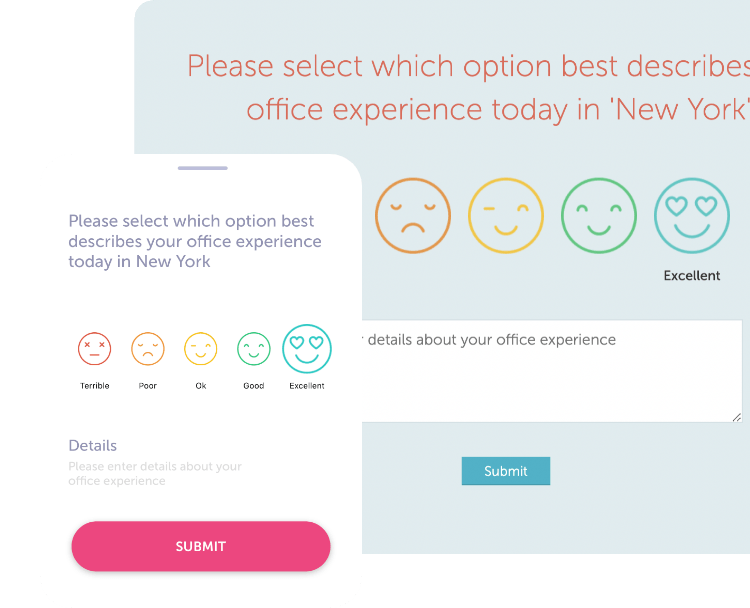
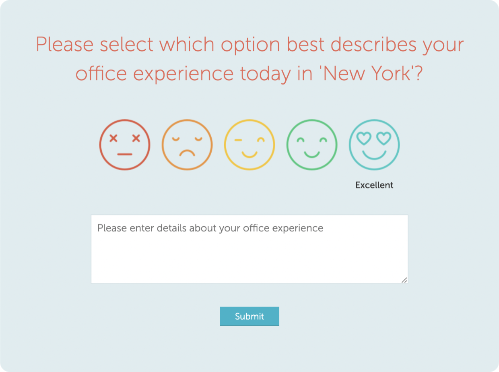
Customer-voted market leader committed to changing
the way we work.


Insights to get you started
Choosing the right desk booking solution is no small feat. We collected a
couple of insightful resources to help you identify your needs and navigate
the sea of options. Continue your research:
Employee experience: FAQ
Answering the most popular questions about employee experience in the workplace.
What is meant by employee experience?
Employee experience is all of the things that make up how an employee feels about their job. These include, but are not limited to, the company culture, business practices throughout different departments (including HR), work-life balance, company values on diversity and inclusion on the team. It also includes how your direct manager interacts with you and impacts these things for you on a day-to-day basis.
Why is employee well-being important?
Healthy employees are less stressed, more productive, and more attuned to the needs of those around them. These benefits extend from employee relations to company dynamics as a whole.
Happy employees don't simply go through their days with a smile on their face because it's required by law - happy employees find satisfaction in their work and see growth potential in the company they're working for. On the other hand, unhappy or unhealthy employees have very little motivation for growth or contribution - they feel that there will be no acknowledgement if they push themselves beyond what's asked of them.
What is a good employee experience?
A good employee experience is one where employees feel appreciated, engaged, and able to do their best work.
An organization should have a clear idea of what they want the employee experience to be like, and then put in place systems and processes that support that goal. Some things to consider include offering opportunities for training and development, providing feedback and recognition, creating a positive work environment, and offering a good benefits package.
Employees are your most important asset, so it's important to make sure they're happy and productive. By creating a good employee experience, you can increase retention rates, improve morale, and boost productivity.
What is an employee experience strategy?
An employee experience strategy is a plan of action that aims to create a positive and consistent employee experience. The goal is to make sure that all employees have a good overall experience, from the moment they apply for a job to the day they leave.
There are many different aspects of the employee experience that can be improved, such as onboarding, training, communication, and benefits. Every company is different, so it's important to tailor the strategy to fit the specific needs of your organization.
The key is to keep things simple and consistent so that employees know what to expect and feel like they're part of something larger.
How do you measure employee experience?
There are many ways to measure employee experience – but one of the most straight-forward ones is running employee experience surveys on a regular basis (which you can easily do with a tool like YAROOMS). Furthermore, looking at workplace analytics can also give you a better idea of what makes your employees “tick” in a positive sense, as well as what doesn’t (or does the exact opposite of that).
How do you promote employee well-being?
There are a number of things you can do to promote employee well-being in your workplace. Some of the most effective strategies include:
- Offering flexible work arrangements, such as telecommuting and flextime, so employees can have more control over their work schedules.
- Encouraging employees to take breaks throughout the day, even if it's just for a few minutes to walk around or get some fresh air.
- Providing wellness programs, such as yoga classes or exercise groups, that employees can participate in during their free time.
- Creating a positive and supportive work environment where employees feel comfortable discussing their problems and challenges openly.
Does employee well-being increase productivity?
There's a lot of research that supports the idea that employee well-being does in fact increase productivity. In one study, employees who were given access to wellness programs reported feeling more energized and productive at work. And another study found that when employers increased their focus on employee well-being, there was a noticeable increase in productivity.
So it's pretty clear that there are real benefits yielded when employers invest in their employees' well-being. Not only do employees feel better, but they're also able to produce more work. It's a win-win for everyone involved!
What is employee autonomy?
Employee autonomy is the degree to which an employee has decision making power within their job. It is related to, but not equivalent to participation in decision-making. The more autonomy employees have, the less likely they are to experience frustration and disillusionment with their job which may lead them to quit or eventually become disengaged workers.
The theory of social contract indicates that autonomous employees are happier because they feel that what they do for work makes a difference in some way; moreover, this results in better work performance by these employees as well as increased productivity.
How do you give your employees the autonomy?
Give them a sense of ownership and responsibility for their work.
You want to give your employees the autonomy to do their job the way that they think is best. That means giving them all the resources they need, such as knowledge and money, so that you can focus on managing how people work rather than telling them what to do. You also want to let your staff know when you appreciate their efforts via public acknowledgement or other motivating incentives like bonuses or days off. This will help motivate and unite your team and build a culture of working together to accomplish goals. And finally, if an employee has a great idea but it doesn't fit into the current company's goals, listen without judging too quickly - it could be worth looking into!


